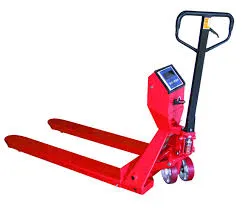


Understanding Manual Chain Hoists An Essential Tool for Lifting and Moving Heavy Loads
Manual chain hoists are versatile mechanical devices designed to lift, lower, or move heavy loads with minimal effort. They play a crucial role in various industries, including construction, manufacturing, warehousing, and logistics. This article explores the features, benefits, and operational principles of manual chain hoists, emphasizing why they are essential tools for many applications.
Features of Manual Chain Hoists
Manual chain hoists typically consist of several key components the housing, gear system, hand chain, lift chain, and hook. The housing encases the internal mechanisms, protecting them from dust and debris. The gear system converts the manual effort applied to the hand chain into lifting power, allowing the user to lift heavy items efficiently. The lift chain runs through the hoist mechanism and is connected to the load, while the hook securely attaches the load to the hoist.
One of the most distinctive features of manual chain hoists is their simplicity and reliability. They often come in various capacities, ranging from a few hundred kilograms to several tons, making them suitable for a wide range of lifting tasks. Additionally, they are designed to be portable, allowing users to transport them easily to different job sites as needed.
Benefits of Manual Chain Hoists

One of the primary advantages of manual chain hoists is their ease of operation. Users can lift heavy loads using just a hand-operated chain, which requires no electricity or complex machinery. This makes them ideal for locations where power supply is limited or unavailable. Moreover, manual chain hoists typically have lower initial costs compared to electric hoists, making them a cost-effective solution for businesses and individuals alike.
Another significant benefit is the increased safety they offer. With proper training and adherence to operational guidelines, manual chain hoists can be operated safely, minimizing the risk of accidents. They often include safety features such as load limiters and braking systems, ensuring that loads are handled securely.
Operational Principles
Operating a manual chain hoist requires basic knowledge of its components and functions. To lift a load, the user pulls on the hand chain, which engages the gear system. This, in turn, raises the lift chain and the attached load. To lower the load, the user simply controls the hand chain's movement, allowing the lift chain to unwind gradually. It is crucial to ensure that the load does not exceed the hoist's rated capacity and to inspect the hoist regularly for wear and tear.
Conclusion
In summary, manual chain hoists are invaluable tools for lifting and moving heavy items safely and efficiently. Their durability, portability, and cost-effectiveness make them a preferred choice across various sectors. Understanding their features, benefits, and operational principles enables users to maximize their efficacy while minimizing risks. Whether in a professional setting or for personal projects, manual chain hoists remain a reliable solution for handling heavy loads.



